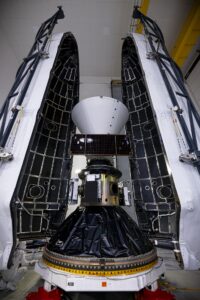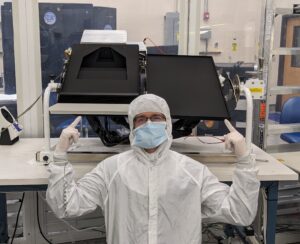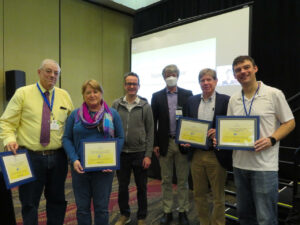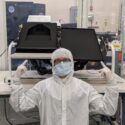
News with Syndication for Schools

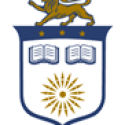
Dr. Nathan Magee Awarded TCNJ Science Distinguished Teacher-Scholar Award
Dr. Nathan Magee, Chair of the TCNJ Physics department, has recently been awarded the TCNJ School of Science Distinguished Teacher-Scholar Award. This award is given to mid-career or senior full-time faculty members with a distinguished record of excellence as Teacher-Scholars. See the linked Instagram post below for more information. Congratulations to Dr. Magee!
https://www.instagram.com/p/DGV7BbAxoij/?utm_source=ig_web_copy_link&img_index=1

TCNJ named top-ranked college in region by U.S. News
U.S. News & World Report released its 2025 Best Colleges rankings today and The College of New Jersey was ranked as the top institution in the “Best Regional Universities—North” category.
TCNJ has held the top spot in its region among public colleges every year since 1991, but this year, it vaulted to the top overall spot among all institutions, public and private.
TCNJ was ranked as the best college in the region for veterans and moved up four spots to rank fourth in undergraduate teaching programs.
The college received high praise in other recently announced rankings as well. The Wall Street Journal ranked TCNJ in the top 20 percent of all institutions in the country, based on student outcomes, including salaries, and the learning environment.
The Princeton Review named TCNJ one of the best 390 colleges in the nation for 2025, based on student evaluations.
Check out the complete U.S. News & World Report 2025 rankings, as well as methodologies.

TCNJ physics department joins regional NSF-funded photonics initiative
Please click on the link below to read the original article:
TCNJ physics department joins regional NSF-funded photonics initiative

Two TCNJ Articles Highlighting Physics Department Students and Faculty
Please see the articles linked below highlighting recent achievements from some of our Physics department students and faculty:
Physics department energized by grant to continue nanoparticle research

TCNJ Physics Department Professor Accepts PhysTEC 5+ Club Award
Last week, Dr. AJ Richards, Associate Professor in the TCNJ Physics department, attended the Physics Teacher Education Coalition’s annual conference and accepted the PhysTEC 5+ Club Award. The PhysTEC 5+ Club honors institutions that certified at least 5 new physics teachers in the previous year; only 7 institutions nationwide achieved this mark. For more information on this award, please see the Physics Teacher Education Coalition’s webpage linked here.

TCNJ Physics Faculty and Students Present to the American Astronomical Society in Seattle
TCNJ physics majors Dean Klunk, Louis Miller, Michael Pedowitz, and Michael Polania as well as biology majors Ashley Fernandez and Skylar D’angiolillo presented their research undertaken with Dr. Lauranne Lanz and Dr. Mariah MacDonald at the recent American Astronomical Society (AAS) meeting in Seattle.
Dean Klunk, Louis Miller, post-baccalaureate researcher Isabella Carlton, and Dr. Lanz presented posters on research to better understand the activity of supermassive black holes using X-ray observations. Dr. Lanz’s poster summarized a recent paper published by the Astrophysical Journal on activity measured using short Chandra X-ray Observatory observations of 12 post-starburst galaxies, which required developing a new methodology called forward-modeling. Louis showed early results extending this work to an additional 30 galaxies with archival Chandra observations, and Isabella used much deeper observations taken with the XMM-Newton Observatory to extract and fit spectra of two post-starbursts, confirming the forward-modeling results. Dean showed the results of implementing modeling of the background in this methodology using Swift/BAT galaxies. Dr. Lanz also presented in a splinter session on the possible breadth of science on galaxies that could be achieved with a proposed X-ray telescope called AXIS.
Dr. MacDonald’s four students, Skylar D’angiolillo, Ashley Fernandez, Michael Pedowitz and Michael Polania gave talks on the results of their research on exoplanet dynamics. Skylar showed that the unique dynamic interactions between two of the planets in the Kepler-305 system, known as mean motion resonance, allowed an estimation of their masses, such that one planet is likely to be terrestrial, two are likely mini-Neptunes with extended atmospheres, and the last planet has an inflated atmosphere with a bulk density less than water. Ashley and Michael Polania presented their results of the resonant system Kepler-80, using dynamics to measure the mass and orbit of its outermost system and examining the possibility of an additional planet in the system. Michael Pedowitz discussed the stability and habitability of planets orbiting two stars over a billion years, finding that most planets orbiting stars of similar mass are too cold to host Earth-like life and that most of these planets experience large temperature fluctuations on very short timescales (ΔT > 50 K, t ≈ 40 days), requiring more in-depth radiative transfer modeling to fully explore their habitability. Dr. MacDonald gave two talks: one focused on the results of ungrading PHY 162 Astronomy: Planets and the lessons learned in applying this technique to a large, liberal learning STEM course; the other discussed a new software created to identify, confirm, and characterize resonances, which was applied to 66 new resonant systems.
Two recent graduates also presented their results at AAS. Nick Tusay (class of 2020; now a graduate student at Penn State) gave a talk on his work searching for signatures of technology use with SETI observations. Nikhil Patten (class of 2021; now a graduate student at University of Wyoming) presented a poster on spectra of massive stars that power bowshock nebulae.

TCNJ Physics and Education Professors Write About Physics Education for AAAS ARISE Website
TCNJ Physics and Education professors recently collaborated on a blog post about the current state of Physics Education in the US for the AAAS ARISE website. The blog post can be read here: https://aaas-arise.org/2022/10/19/wherefore-art-thou-physics-teacher/.

Dr. Padma Ganesh Joins TCNJ Physics Department as New HHMI Fellow
The TCNJ Physics Department welcomes Dr. Padma Ganesh as the HHMI Fellow and Visiting Professor of Physics starting this Fall. Dr. Ganesh graduated with a PhD in Physics from the Indian Institute of Technology, Chennai, India, where she specialized in experimental condensed matter. Later, she worked as a postdoc at India’s National Physical Laboratory studying intercalated carbon fibers and testing metal matrix composites. Dr. Ganesh is exploring the use of graphene as a potential battery material of the future. She is also working on research questions in Physics Education to understand and quantify how students apply their conceptual knowledge to think critically about ideas they encounter in daily life and on social media. Dr. Ganesh is currently teaching General Physics I, where she employs active learning and the use of videos to help teach conceptual understanding. She is also interested in understanding what role, if any, social media plays in reinforcing physicist stereotypes or enabling the exclusion of certain groups in physics.
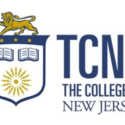
TCNJ Physics Students in Germany for Study Abroad Opportunity
TCNJ physics majors Nick Pyontek, Dean Klunk, Pierce Wickenden, Alex Stourton, and Brennan Neubauer are in Berlin, Germany for a 3-week course in photonics with Prof. David McGee. The students will work with McGee and collaborators at the Berlin Institute of Technology (BHT) as part of an international grant between TCNJ and BHT.
Contact
Physics Department
Science Complex, Room P123
The College of New Jersey
P.O. Box 7718
2000 Pennington Rd.
Ewing, NJ 08628

